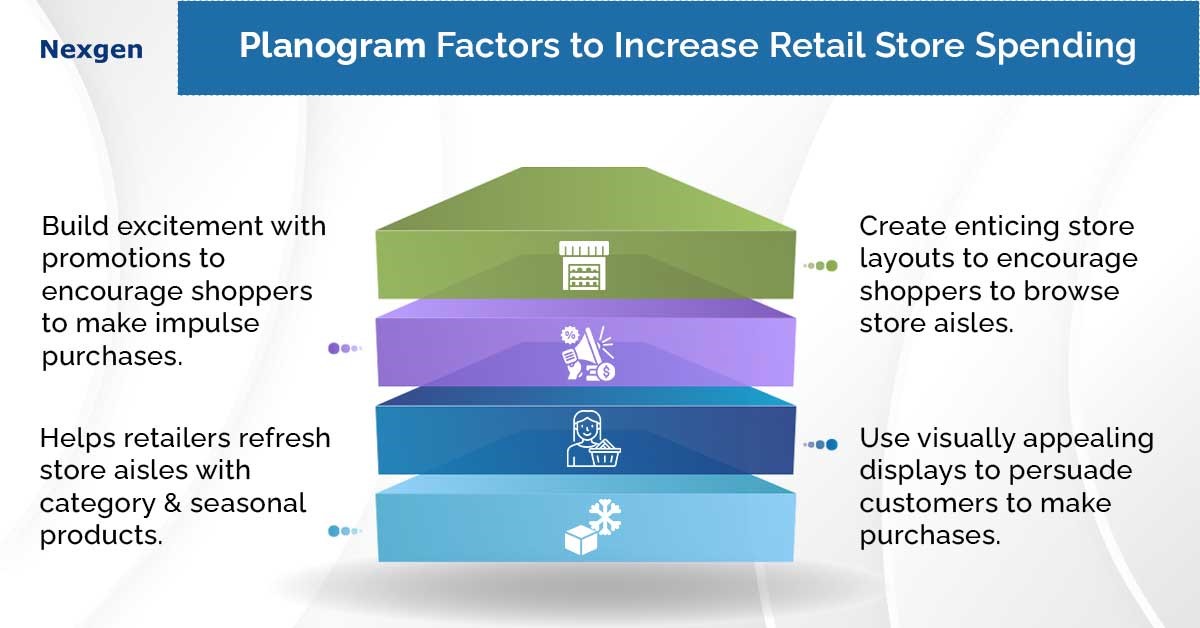Finding ways to encourage customers to increase their retail spending goes a long way towards helping you meet sales goals. That much is obvious. You would not necessarily achieve your goals each month, though. This is because, even though there are various steps you may take to increase spending, you might wind up working against yourself.
By that, we simply mean that you could be doing something in your store that is damaging your chances of success. You may not even be aware of this. Fortunately, with the help of proper shelf planning tools, such as planograms, you can fix your mistakes. Planograms are an effective tool for retailers to increase the chances of in-store spending by strategically placing products on shelves and creating a more organized store layout, which enhances the customer shopping experience. Most retailers now rely on professionals who provide planogram services to create customized store planograms that give shoppers a realistic vision of where to make their purchases. They help with the shelf planning process based on consumer behavior, retail data, and market trends. So, the following are some planogram ways retailers can improve the customer's shopping experience and encourage them to make more purchases:

1. Your store’s branding is confusing to customers.
The first reason why shoppers are not spending more money in your store is because of inconsistent displays. Which means your retail brand is confusing. For example, after starting a store and operating it for some time, you will have developed a distinct brand for your outlets. Customer expectations about your store's layout, shelving, and product selection all increase as a result.
Let us imagine you own multiple stores, and you are a supermarket retailer with grocery and butchery on site. You place your in-store butchery next to your grocery department in one of your stores. In another, though, the butchery and grocery are in different areas of the store. Anyone who enters the second store after going to the first store expects to have the same experience. They anticipate finding the grocery and butcher stores together. But the moment you depart from this expectation, you create an opportunity for customers to feel uncomfortable in your store. You can fix this mistake by creating a store layout design that considers the various category hierarchies you have, and maintain the same layout for every store, regardless of location. This will help you increase shopper familiarity and eliminate confusion. Using data-driven planograms and standardizing your merchandising are two things to think about if you want to be consistent from a product standpoint.
2. You have not paid any attention to space planning.
When planning your store, it is important to pay attention to the product range and space planning of your store. Let us start by discussing the importance of the product range.
Localized assortment planning can help you drive sales. This will provide your customers with the right product range at the right time. If you do not pay any attention to this, it will result in range inconsistency, which may discourage customers from visiting the store. Even your existing loyal shoppers will stop visiting sometimes. If they cannot find the products they want in your store, you cannot expect them to continue to shop. That is why it is important that you stock different ranges of products on your store shelves.
3. Lack of educational content in your store.
Another mistake you can make in-store is to think that you do not need any in-store educational content to educate your customers. Here, by educational content, we are specifically referring to signage, merchandising displays, and promotional stands that can direct your customers in the right direction. More importantly, make it simple for customers to shop at your store. In many instances, though, the thinking goes that since you have store staff, you can expect shoppers to approach them if they have a question or cannot find a product. But that is assuming too much. How do you know if your customers will ask? Many might not. And where does that leave you?
For instance, a customer may enter the store looking for a specific item but not know where to look because they have never been inside the store before. The fact that there is no one in sight or any indication directing them makes the situation worse. One solution is to consider placing labels or marketing banners with additional product or category information on your gondolas or beside your shelves. Having this knowledge on hand makes it simple for your customer to browse through various products and categories. But be careful; including too many of these will clog your aisles and give the impression that your store is disorganized.
Overview of Nexgen Planogram Services
Nexgen offers store-specific planograms for clients that optimize sales and achieve category objectives. We create customized planograms for your business to ensure that these are better aligned with your goals and merchandising strategies. Our expertise in planogram automation helps us build planograms faster, better and consistently. Whether it is creating a planogram from scratch, or a typical reset, we have the knowledge, tools, and experience to get the job done for you.
Get Your Free Trial Now!